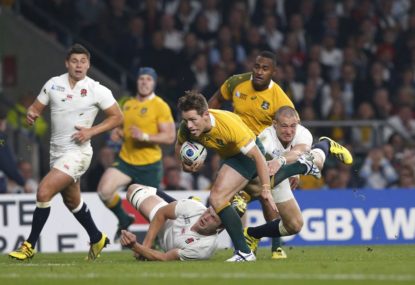There are many different reasons why northern hemisphere rugby pales in comparison to the fast-paced and thrilling rugby on show south of the equator. And a wide range of excuses as well.
The Six Nations is halfway through this year’s competition, and yet the quality of rugby has been overshadowed by the opening weekend of Super Rugby.
Why is this so? Surely the northern hemisphere, the inventors of the sport and the surrounding nations, have some quality within them? If so, why were they all unceremoniously knocked out of the World Cup so early, some in devastating fashion (England and France, I’m looking at you)?
Let’s take a look at some of the reasons which may indicate why such a gap in quality and entertainment exists between the two hemispheres.
Weather
This may seem like a poor excuse, but in reality this plays a huge aspect on whether the game will be fast-paced, full of running rugby, or a forward-orientated game jam-packed with sloppy handling and aerial ping-pong.
In the northern hemisphere, the winter is significantly wetter, windier and more miserable, and this often forces, as was seen in the opening two weeks of the Six Nations, teams to grind out ugly wins. A lot of attacking opportunities are squandered through handling errors.
When the weather is good, sunny and clear, the northern hemisphere often do get games that flow as they do down south. France versus England in the 2015 Six Nations proved that, with a final score line of 55-35. It was arguably the match of the year – and a year which included the World Cup!
Cultural differences
In New Zealand and South Africa especially, rugby is much more part and parcel of growing up, and is often taught from an extremely young age, as well as being the main sport of the country.
Rugby is not the most played sport in any of the northern hemisphere countries and certainly isn’t as popular as it is down here. After the most recent World Cup, rugby in England and other northern hemisphere countries is arguably making a comeback and is starting to be played in more schools and from a younger age.
Sadly, the vast majority, almost three-quarters of schools in England, play football (soccer) as their winter sport, and a staggering amount don’t offer rugby at all.
Contrast that to the southern hemisphere countries, where rugby is part of growing up, is played at school and at clubs, and is watched every weekend. This certainly gives a broader knowledge of the sport and a way of approaching it that is rarely seen up north.
Basic skills
This brings us neatly to the main and most obvious point. Watching southern hemisphere teams play, the level of basic skills – offloads, passing, kicking, spotting gaps – are all much more developed. Playing, watching and discussing rugby from such a young age will put you in better stead to play reactionary rugby, and how best to attack and defend.
The speed at which the southern hemisphere play is a combination of all these factors – better rugby brains, more exposure to the sport from a younger age, more practise from youth upwards. This instils more confidence in your play and more confidence in your teammates, which gives you freedom to attack more and not be held back by your fear of failure.
Press and support
This brings me to my final point, and something I have noticed after the last 12 months. The fear of failure in the northern hemisphere, particularly from England, forces negative rugby, and a defensive structure that creates the dull, monotonous, league-like games that are deemed to be ‘boring’. (Watch Wales versus France this last weekend to see what I mean).
The media in the northern hemisphere, in France and England especially, is full of negative and overly opinionated articles from overzealous and over analytical journalists who are just waiting for failure so their next piece can be as scathing as possible.
And while the press in the southern hemisphere expects more success from their teams, and the weight of expectation can indeed weigh heavily, they praise and encourage more often and regularly describe their players as deities.
This positivity from the press leaks into the supporters, and by far the southern hemisphere supporters are more confident, more reasonable and more supportive of their teams. The northern hemisphere supporters tend to be aggressive keyboard warriors who myopically discuss their own team’s potential while crushing others.
Such differences make tiny variances, even if some are reactionary to other aspects, but I fear that the gap will continue until grassroots rugby begins to expand in the northern hemisphere.
Even then you still have a pessimistic press, poor weather and a lack of basic skills to contend with. Some can be fixed, others are just constants. Can the gap ever be closed?






























































































